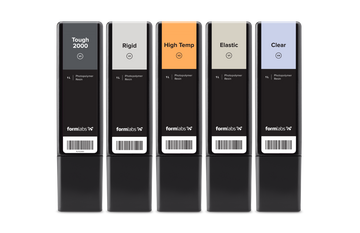In the realm of 3D printing, Formlabs continues to redefine possibilities. As the Country Manager of 3DVerkstan Danmark, I'm excited to share insights into the Alumina 4N Resin, a pioneering material that promises to revolutionize ceramic 3D printing.
Formlabs' Alumina 4N Resin is not just another addition to the 3D printing material lineup. It's a game-changer. For the first time, users can harness the unmatched purity of a 99.99% alumina material, merging the design freedom of 3D printing with the robustness of ceramics. This innovation is set to democratize ceramic 3D printing, making it both intuitive and cost-effective.
Dr. Malte Hartmann from Bosch Advanced Ceramics aptly captures the essence of this breakthrough, highlighting the Formlabs ecosystem as the go-to choice for organizations aiming to directly print ceramic parts. The ease of use, combined with the printer's large build volume and compact footprint, makes it a compelling proposition.
But why should businesses pivot to ceramic 3D printing? Traditional ceramic fabrication methods, such as slip casting or injection molding, are not only expensive but also time-consuming. These processes often necessitate outsourcing to specialists, making them less cost-effective for low-volume requirements. Formlabs' SLA printers, in contrast, offer a cost-effective solution, drastically reducing both production costs and lead times.
Moreover, traditional manufacturing methods come with design constraints. They limit the ability to produce intricate structures like overhangs or internal channels. 3D printing, with its inherent design flexibility, opens up avenues for innovation, especially in sectors like aerospace and automotive that demand high heat and chemical resistance.
Beta testers have been raving about the Alumina 4N Resin. The Air Force Research Laboratory, for instance, utilized the resin to prototype parts for turbine engines, significantly reducing design iteration time and costs. Atlas Elektronik UK LTD, a renowned naval/marine electronics and systems company, leveraged the material to expedite their production timelines and enhance design freedom.
The applications for 3D printed ceramic parts are vast. From high voltage applications and thermal protective parts to foundry tools for metal casting, the possibilities are endless. The mechanical properties of the Alumina 4N Resin, including its high temperature flex strength and purity, make it a preferred choice for various industries.
Conclusion:
The Alumina 4N Resin is not just a material; it's a bridge to the future of ceramic engineering. By merging the best of 3D printing with high-performance materials, Formlabs has expanded horizons for industries worldwide. As we at 3DVerkstan Danmark continue to explore these innovations, we're eager to see the transformative impact of this resin on the Danish manufacturing landscape and beyond.







